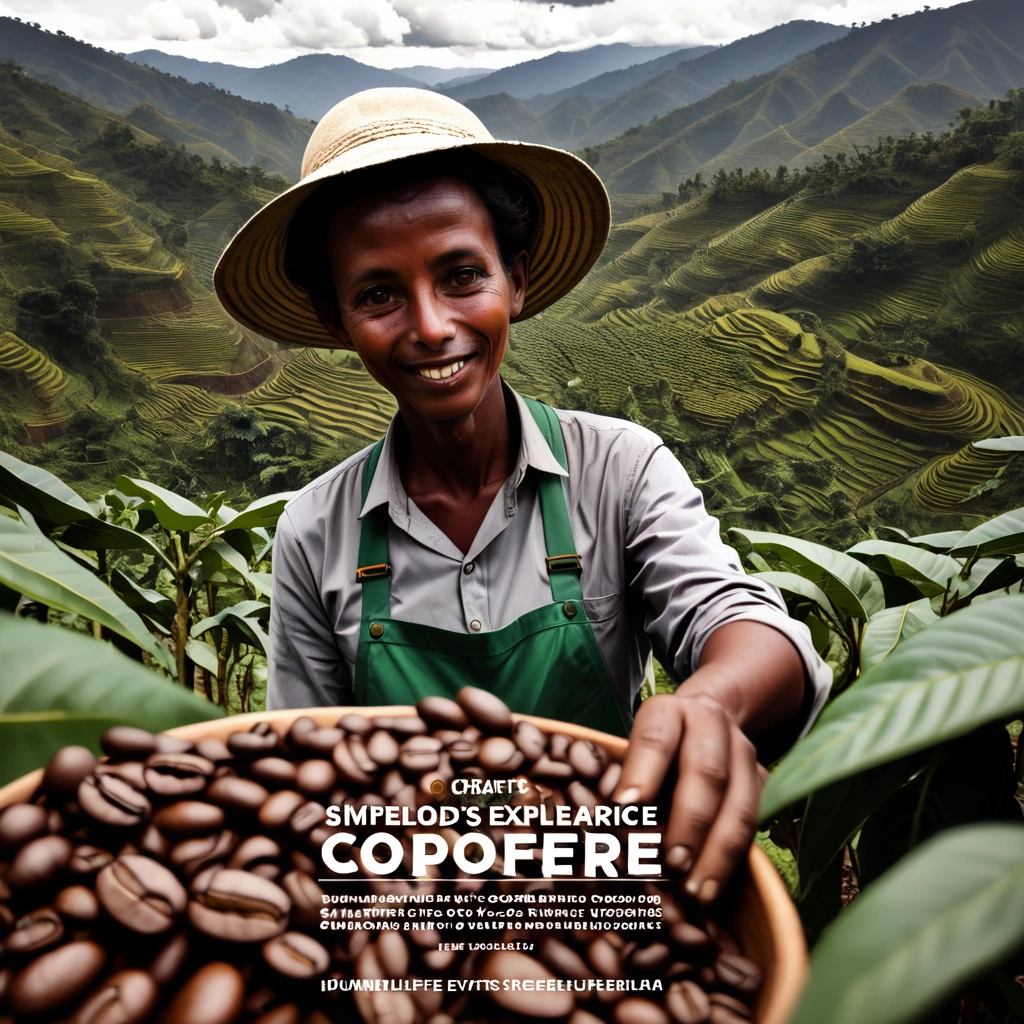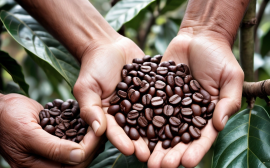The Allure of Single-Origin Coffee: A 2025 Introduction
For the discerning coffee lover, the term ‘single-origin’ holds a certain mystique. It speaks of terroir, of meticulous cultivation, and of a flavor profile unadulterated by blending. In 2025, the pursuit of the perfect single-origin cup is more vibrant than ever, driven by a growing consumer awareness and a commitment to ethical and sustainable sourcing. This guide serves as your passport to the world’s finest single-origin coffees, offering insights into the regions, the beans, and the coffee brewing methods that will elevate your coffee experience.
From the sun-drenched slopes of Ethiopia to the volcanic soils of Sumatra, we’ll explore the unique characteristics that define each origin, and provide actionable tips for selecting, storing, and brewing these exceptional beans, ensuring you unlock the full potential of the best coffee beans available. The allure of single-origin coffee lies in its transparency and traceability. Unlike blends, which combine beans from various origins to achieve a consistent flavor profile, single-origin coffee showcases the distinct characteristics of a specific farm, region, or even a particular lot.
This allows coffee enthusiasts to experience the nuances of different coffee growing regions and appreciate the impact of factors such as altitude, climate, soil composition, and processing methods on the final cup. Understanding these elements is key to appreciating the diversity and complexity that single-origin coffees offer, transforming a simple beverage into a sensory exploration. Beyond flavor, the rise of single-origin coffee is intrinsically linked to the growing demand for sustainable coffee. Consumers are increasingly aware of the social and environmental impact of their purchasing decisions, and they seek out coffees that are produced in a responsible and ethical manner.
Many single-origin coffees are sourced directly from smallholder farmers or cooperatives who are committed to sustainable farming practices, such as organic cultivation, water conservation, and fair labor standards. By choosing single-origin coffee, consumers can support these farmers and contribute to a more sustainable coffee industry. This coffee brewing guide will highlight producers dedicated to these practices. Navigating the world of single-origin coffee can seem daunting, but with a little knowledge and experimentation, anyone can become a connoisseur.
Understanding coffee flavor profiles is essential. Whether you prefer the bright acidity and floral aromas of an Ethiopia Yirgacheffe, the balanced flavors and nutty undertones of a Colombia Medellin, or the earthy notes and full body of a Sumatra Mandheling, there’s a single-origin coffee out there to suit your palate. Furthermore, mastering different coffee brewing methods, from pour-over to French press, allows you to fine-tune the extraction and highlight the unique characteristics of each bean, maximizing your enjoyment and appreciation for the art of coffee.
Ethiopia Yirgacheffe: Floral Aromas and Bright Acidity
Ethiopia Yirgacheffe: Nestled in the highlands of Ethiopia, specifically within the Gedeo zone, Yirgacheffe is globally renowned among single-origin coffee aficionados for its bright acidity, captivating floral aromas, and delicate citrus notes, making it a jewel among the best coffee beans. The unique terroir, characterized by high altitudes and fertile volcanic soil, contributes significantly to its distinctive coffee flavor profiles. Washed processing is the most common method employed, meticulously removing the fruit pulp to enhance the clarity, complexity, and vibrant acidity of the beans.
This careful processing allows the inherent characteristics of the bean to truly shine, setting it apart from other coffee growing regions. Ideal coffee brewing methods for Yirgacheffe include pour-over and drip, allowing the nuanced flavors to fully express themselves. The controlled extraction of these methods highlights the tea-like body and the intricate dance of bergamot, jasmine, and lemon notes that define a well-brewed Yirgacheffe cup. Experimentation with grind size and water temperature is encouraged within any coffee brewing guide, as subtle adjustments can dramatically impact the final result, unlocking hidden layers of flavor.
Expert roasters often recommend a light to medium roast profile to preserve the delicate floral aromatics and prevent the development of bitter or burnt flavors, showcasing the bean’s inherent sweetness and complexity. Notable farms and cooperatives, such as the Yirgacheffe Coffee Farmers Cooperative Union (YCFCU), play a crucial role in maintaining the quality and integrity of Ethiopia Yirgacheffe coffee. YCFCU’s commitment to quality control, fair trade practices, and community development has significantly benefited local farmers and ensured the consistent availability of exceptional beans.
However, climate change is increasingly impacting the region, primarily through altered rainfall patterns and rising temperatures, posing significant challenges to consistent yields and potentially affecting the unique characteristics of Yirgacheffe coffee. Sustainable coffee sourcing initiatives are therefore more critical than ever to support farmers in adapting to these changes, preserving the unique terroir, and ensuring the long-term viability of this exceptional single-origin coffee. Consumers actively seeking sustainable coffee can directly contribute to these efforts by choosing certified beans and supporting brands committed to ethical sourcing practices.
Colombia Medellin: Balanced Flavors and Nutty Undertones
Colombia Medellin: Nestled in the Andean highlands, Colombia Medellin produces single-origin coffee celebrated for its balanced flavor profile, making it a consistently approachable choice for both seasoned aficionados and newcomers. Characterized by a medium body, distinct nutty undertones reminiscent of roasted almonds, and a subtle hint of dark chocolate, Medellin beans offer a harmonious cup. The region’s stable climate, marked by consistent rainfall and moderate temperatures, coupled with the high altitude of the coffee growing regions, contributes significantly to the uniform quality and reliable consistency of these best coffee beans.
Medellin’s reputation for delivering a well-rounded and satisfying coffee experience stems from these favorable environmental factors and meticulous cultivation practices. The prevalence of washed processing in Medellin further enhances the coffee’s clean and bright characteristics. This method, involving the removal of the cherry pulp before drying, allows for a more controlled fermentation process, resulting in a clearer expression of the bean’s inherent flavors. This meticulous attention to detail in post-harvest processing contributes to the coffee’s versatility, making it suitable for a range of coffee brewing methods, including drip, French press, and espresso.
Its adaptability also makes it a favorite among baristas, who appreciate its ability to perform well in both black coffee preparations and milk-based drinks, allowing the nuanced coffee flavor profiles to shine through. The Federación Nacional de Cafeteros (FNC) plays a pivotal role in upholding the quality and promoting the sustainability of Colombia Medellin coffee. This organization supports local farmers through research, education, and quality control programs, ensuring that best practices are implemented throughout the supply chain.
However, climate change poses a significant threat to the future of coffee farming in Medellin, with rising temperatures and altered rainfall patterns impacting bean quality and yields. To mitigate these challenges, sustainable coffee practices such as shade-grown coffee, which provides crucial microclimates and biodiversity, and water conservation techniques are increasingly vital for ensuring the long-term economic and environmental viability of coffee production in this renowned region. Embracing these methods is essential for preserving the unique characteristics of Colombia Medellin single-origin coffee for generations to come. When exploring a coffee brewing guide, consider the impact of roast level on the nutty and chocolate notes; a medium roast typically enhances these characteristics, while a lighter roast may accentuate the inherent acidity.
Sumatra Mandheling: Earthy Notes and Full Body
Sumatra Mandheling: Cultivated on the lush Indonesian island of Sumatra, Mandheling single-origin coffee stands apart with its distinctive earthy notes, full-bodied character, and comparatively low acidity. Unlike its Latin American counterparts, Sumatra Mandheling presents a uniquely savory profile, often exhibiting hints of cedar, spice, and even tobacco. This unique flavor profile is largely attributed to the ‘giling basah,’ or wet-hulled, processing method, a semi-washed technique endemic to the region. During giling basah, the coffee parchment is removed at a much higher moisture content than in fully washed processes, leading to increased microbial activity and the development of these signature earthy and complex flavors.
Expert roasters carefully monitor the bean’s moisture content during roasting to unlock its full potential. This makes it one of the most sought after of all best coffee beans. The ‘giling basah’ method, while contributing to Mandheling’s unique profile, also presents challenges. The high moisture content of the beans makes them particularly susceptible to mold and inconsistencies, requiring meticulous attention throughout the drying process. Smallholder farmers, who comprise the vast majority of coffee producers in Sumatra, often rely on traditional techniques and limited infrastructure, making quality control a constant concern.
Ideal coffee brewing methods to highlight Mandheling’s character include the French press and cold brew, which accentuate the coffee’s full body and minimize the perception of acidity. Some aficionados also enjoy it as a dark roast espresso, where its bold flavors can truly shine. However, the future of Sumatra Mandheling, like many coffee growing regions, faces significant threats from climate change. Increased rainfall and flooding are becoming increasingly common, disrupting harvest cycles and impacting bean quality. Many sustainable coffee initiatives are now focused on providing Sumatran smallholder farmers with the resources and training necessary to adapt to these changing conditions. These initiatives include promoting drought-resistant coffee varietals, improving soil management practices, and implementing water conservation techniques. Consumers can support these efforts by seeking out certified sustainable Sumatra Mandheling coffee, ensuring that their purchase contributes to the long-term viability of this unique and flavorful single-origin coffee.
Tips for the Home Brewer: Unlocking the Potential of Single-Origin Beans
Unlocking the Potential of Single-Origin Beans: A Home Brewer’s Guide. Selecting the best coffee beans is the first step on the journey to experiencing the unique character of single-origin coffee. Seek out roasters who provide detailed information about their beans, including the specific coffee growing regions, processing methods (washed, natural, honey), and roast date. Freshly roasted beans, ideally used within two to three weeks of roasting, will deliver the most vibrant coffee flavor profiles. Look for certifications like Fair Trade or Rainforest Alliance to support sustainable coffee practices and ensure fair treatment of farmers.
Many roasters now offer sample packs, allowing you to explore a range of origins before committing to a larger bag. Proper storage is crucial for preserving the delicate aromas and flavors of single-origin coffee. Exposure to oxygen, light, heat, and moisture are the enemies of freshness. Store your beans in an airtight, opaque container in a cool, dark place, away from direct sunlight and heat sources like your oven. Avoid storing coffee in the refrigerator or freezer, as condensation can damage the beans.
Consider investing in a vacuum-sealed container to further minimize oxygen exposure. For those who buy in bulk, portioning beans into smaller, airtight containers can help maintain freshness over a longer period. Mastering coffee brewing methods is essential for unlocking the full potential of single-origin coffee. A high-quality burr grinder is a worthwhile investment, as it provides a consistent grind size, which is crucial for even extraction. Experiment with different grind sizes depending on your brewing method: coarser for French press, medium for drip, and finer for espresso.
Water quality also plays a significant role; use filtered water to avoid introducing unwanted flavors. Pay close attention to water temperature, aiming for around 200°F (93°C) for most brewing methods. A coffee brewing guide will often recommend specific ratios of coffee to water, but don’t be afraid to adjust these to your personal taste. For example, to fully appreciate the bright acidity of an Ethiopia Yirgacheffe, a pour-over with a slightly higher water temperature might be ideal, while the earthy notes of a Sumatra Mandheling might be best expressed through a French press. Similarly, the balanced flavors of a Colombia Medellin can shine with a well-executed drip brew.
The Future of Coffee: Appreciating Origins and Embracing Sustainability
The world of single-origin coffee is more than just a beverage; it’s a journey of discovery, a testament to the dedication of farmers, and the artistry of roasters who coax out the inherent potential of each bean. By understanding the nuances of each origin – the soil composition, the altitude, the climate – and embracing sustainable sourcing practices, we can ensure that these exceptional beans continue to thrive for generations to come. As you explore the diverse coffee flavor profiles and aromas of single-origin coffee, remember that each cup tells a story – a story of place, of people, and of a shared passion for the perfect brew.
Embrace the exploration, experiment with different coffee brewing methods, and savor the unique experience that only single-origin coffee can provide. The future of coffee lies in appreciating its origins and supporting the communities that cultivate it, ensuring both quality and ethical practices are upheld. Consider the meticulous work involved in producing the best coffee beans from regions like Ethiopia Yirgacheffe, Colombia Medellin, or Sumatra Mandheling. Each region offers a distinct sensory experience. Yirgacheffe, with its bright acidity and floral notes, showcases the elegance of washed processing, while Sumatra Mandheling, known for its earthy undertones and full body, exemplifies the unique ‘giling basah’ method.
According to the Specialty Coffee Association, consumer demand for traceable and ethically sourced single-origin coffees has increased by over 30% in the last five years, indicating a growing awareness and appreciation for the story behind each cup. This demand empowers farmers and encourages sustainable practices that protect the environment and ensure fair wages. To truly unlock the potential of single-origin coffee, home brewers should focus on freshness and precision. Always start with freshly roasted beans, ideally within two weeks of the roast date, and grind them immediately before brewing.
Experiment with different coffee brewing methods, such as pour-over, French press, or Aeropress, to discover which best highlights the unique characteristics of each origin. A coffee brewing guide can be an invaluable resource, offering tips on water temperature, grind size, and brewing time. Remember, the goal is to extract the optimal coffee flavor profiles without over-extraction, which can lead to bitterness. By paying attention to these details, you can transform your daily coffee ritual into a sensory adventure, celebrating the diversity and complexity of the world’s finest single-origin coffees.
Ultimately, the appreciation of single-origin coffee extends beyond the cup itself; it’s about fostering a connection with the people and places that make it possible. By actively seeking out sustainable coffee options, we contribute to the well-being of coffee-growing communities and the preservation of their unique environments. As renowned coffee expert, James Hoffmann, notes, “Choosing single-origin coffee is not just about taste; it’s about supporting a system that values quality, transparency, and ethical practices.” This conscious consumption ensures that future generations can continue to enjoy the exceptional flavors and aromas of the world’s best coffee beans, knowing that their indulgence contributes to a more sustainable and equitable future for all.



